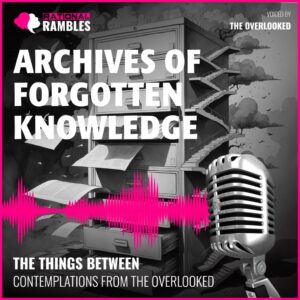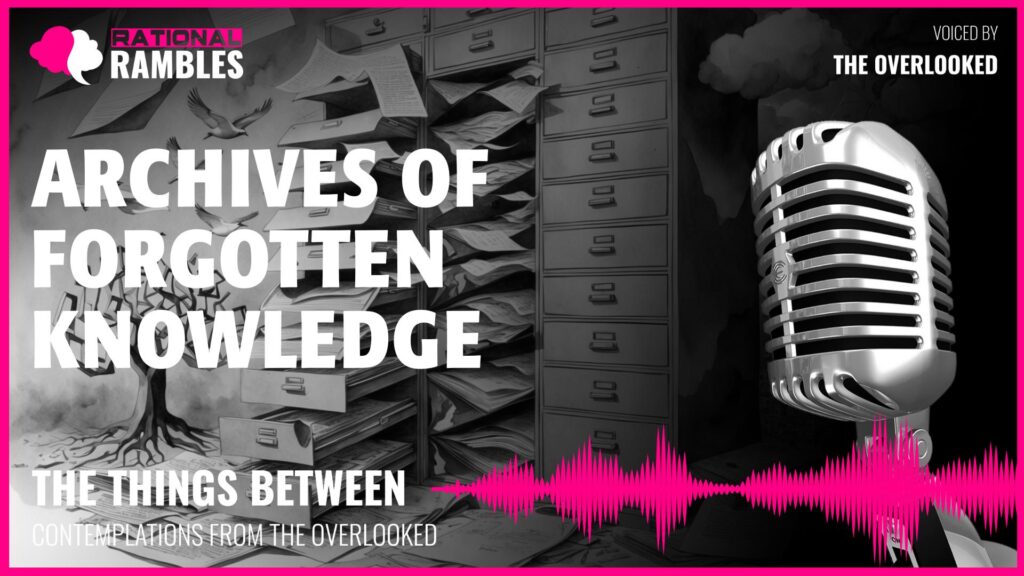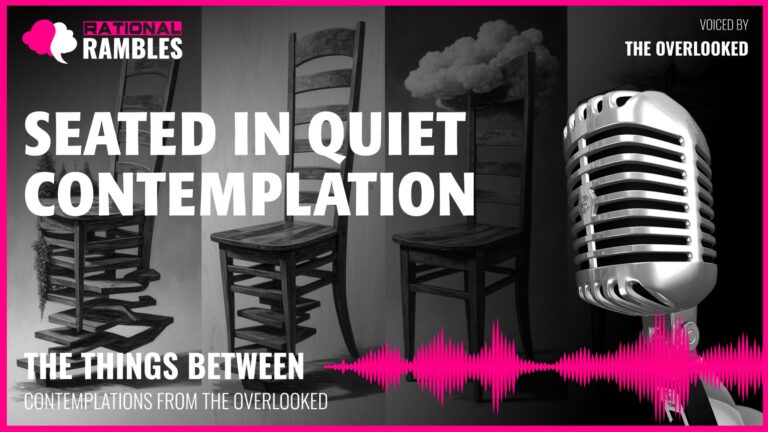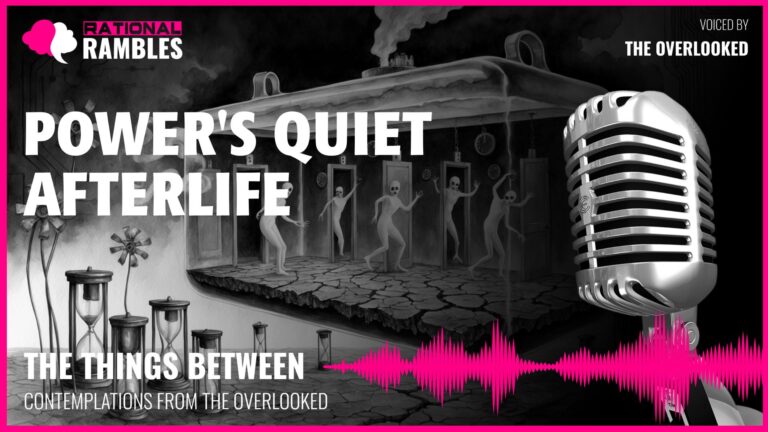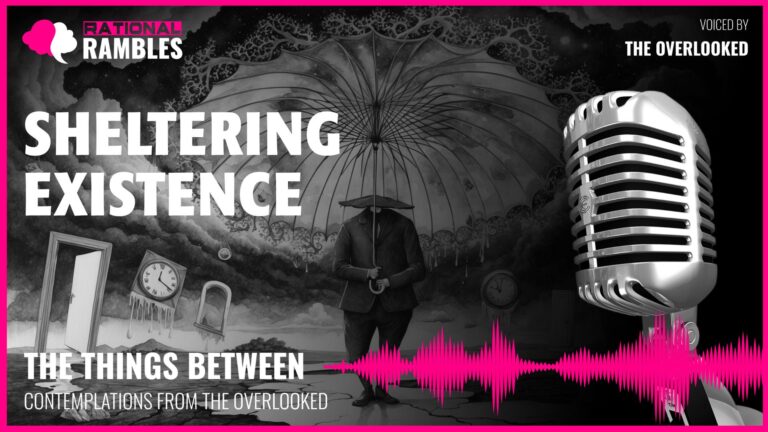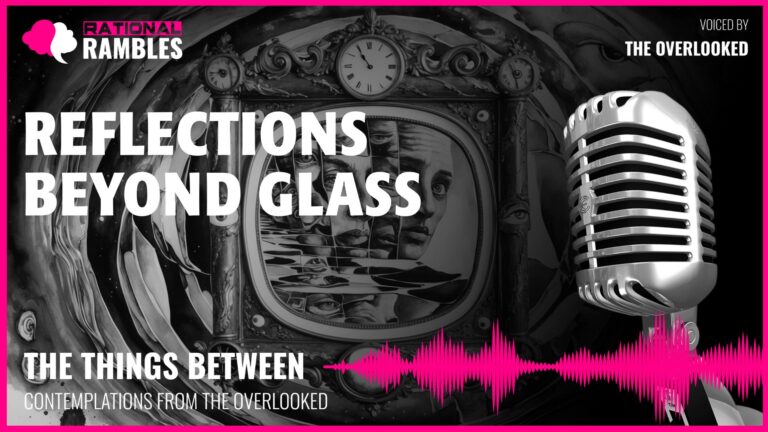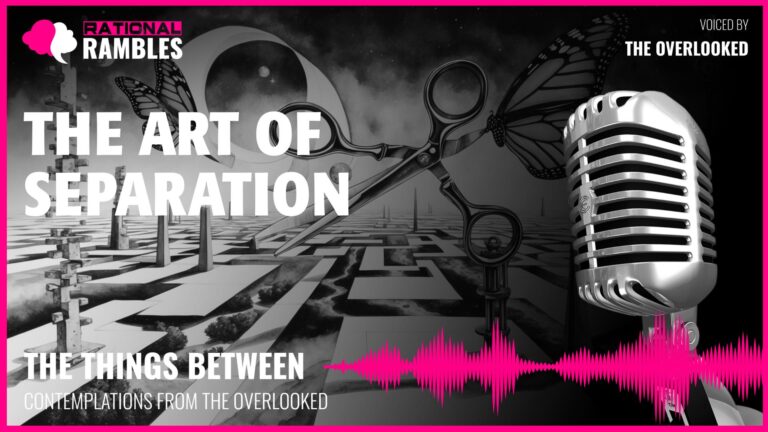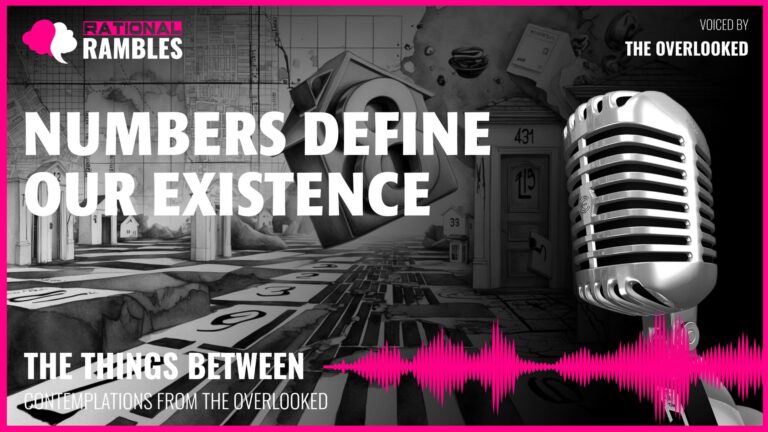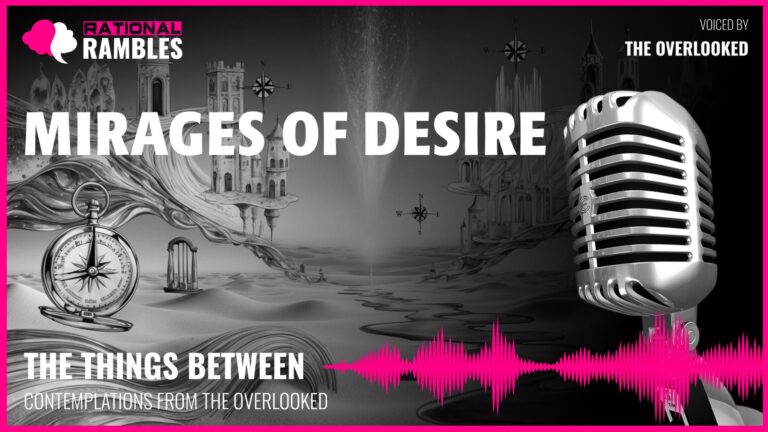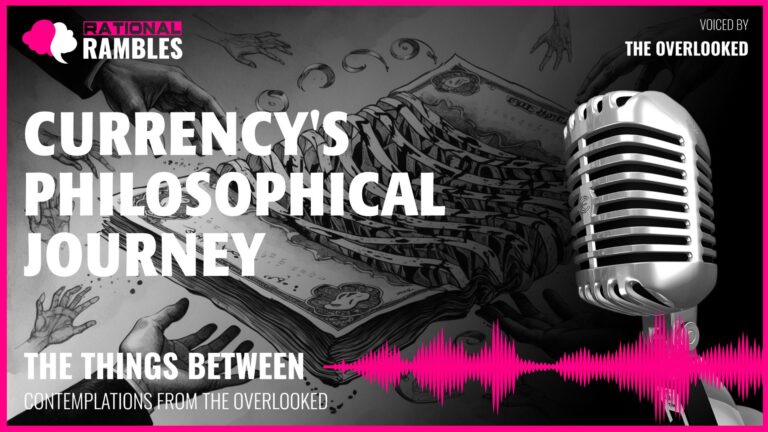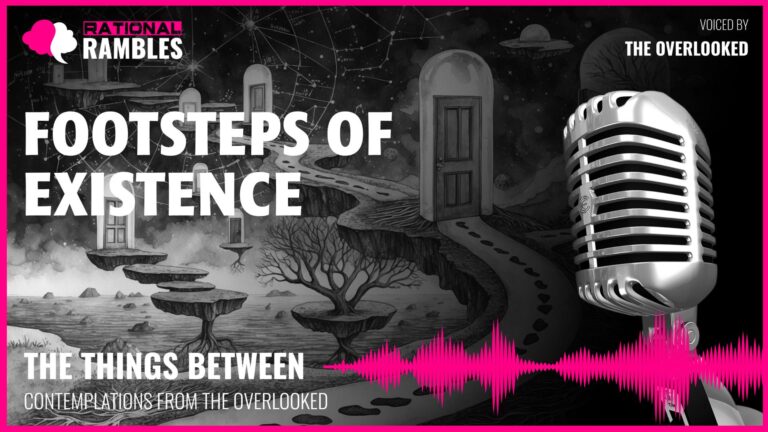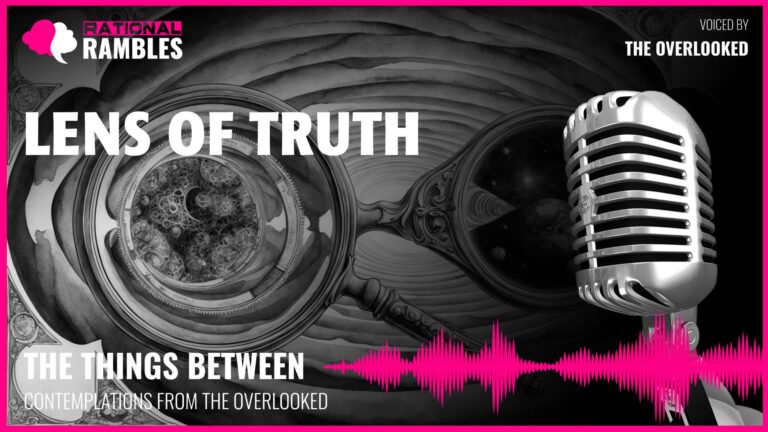The Architecture of Memory: Order, Chaos, and the Human Quest for Meaning
Introduction
In our relentless pursuit to make sense of existence, humans have developed intricate systems of categorization, classification, and containment. We create boundaries, establish hierarchies, and impose order upon the chaotic flux of reality. This fundamental drive to organize reflects not merely a practical necessity but a profound philosophical position on our relationship with the world and our place within it. What does it mean to contain knowledge? How do our systems of organization shape our understanding of reality? Are our attempts to categorize the world merely subjective impositions, or do they reveal something essential about the structure of reality itself?
This article explores the philosophical dimensions of organization and memory, examining how our methods of preserving information reflect our deepest assumptions about time, identity, meaning, and permanence. By analyzing the nature of categorization and the boundaries we create to manage knowledge, we can gain insight into the human condition itself—our fear of disorder, our relationship with time, and our struggle against the inevitable progression of entropy. Through this investigation, we may discover that our systems of organization are not merely practical tools but ontological statements about what we believe exists and what we consider valuable enough to preserve.
The Ontology of Containment
What does it mean for something to contain something else? This seemingly simple question opens onto profound philosophical territory. Containment implies boundaries, an inside and an outside, a distinction between what belongs and what doesn’t. It suggests a relationship between container and contained that is both defining and paradoxical.
Boundaries and Identity
The act of containing necessarily creates boundaries. These boundaries define not only what is contained but the container itself. Consider how a vessel is defined by its capacity to hold something else—its identity is inseparable from its function. Yet the container is not identical to its contents; it maintains a distinct identity while being fundamentally defined by what it holds. This relationship mirrors complex philosophical questions about identity: how much can something change while remaining the same entity? If we replace all the contents of a filing system, is it still the same system? If we change the organizational principles, has the fundamental nature of the archive changed?
The 17th-century philosopher Gottfried Wilhelm Leibniz proposed the principle of the identity of indiscernibles, suggesting that no two distinct entities can share exactly the same properties. In the context of containment, this raises questions about the unique identities of organizational systems. Each system of containment carries its unique history, context, and relationship to what it contains. The boundaries it establishes are not merely physical but conceptual—they represent decisions about what belongs together and what should remain separate.
The Framework of Memory
Containment systems serve as the architecture of memory—they provide the framework within which information can be preserved and accessed. This framework is not neutral; it imposes specific relationships between pieces of information, creating hierarchies, sequences, and associations that shape how we understand the contained knowledge.
Martin Heidegger, in his analysis of technology, suggested that our modern technological frameworks don’t merely organize the world but fundamentally alter how we perceive it. Similarly, our systems for organizing information don’t simply store knowledge but transform it through the very act of classification. A birth certificate filed under “vital records” takes on different significance than the same document filed under “historical documents” or “family history.” The framework becomes part of the meaning, inseparable from the information itself.
This framework of memory extends beyond individual consciousness, creating what philosopher Maurice Halbwachs termed “collective memory”—a shared understanding preserved through cultural artifacts, documents, and systems of knowledge organization. Our containment systems thus become the physical manifestation of how a society chooses to remember its past and structure its understanding of the present.
Order and the Illusion of Mastery
Human beings appear to have an innate drive toward creating order. We categorize, classify, and organize as if these activities grant us some form of control over an otherwise chaotic existence. This pursuit raises profound questions about the nature of order itself and our relationship to it.
The Subjective Nature of Classification
Any system of classification reflects choices—decisions about what qualities or characteristics are most significant for determining categories. These choices are inherently subjective, reflecting the priorities, values, and perspectives of those creating the system. The 18th-century taxonomist Carl Linnaeus developed his classification of living organisms based on physical characteristics he deemed important, but alternative systems could have been developed using different criteria.
Michel Foucault, in “The Order of Things,” famously cited a passage from Borges describing a fictional Chinese encyclopedia that categorized animals according to seemingly absurd criteria—those “belonging to the Emperor,” those “that from a long way off look like flies,” etc. Foucault used this example to illustrate how classification systems that seem natural to those within a particular cultural context may appear arbitrary or even nonsensical from outside that context. What appears as order to one person may seem like chaos to another.
This subjectivity extends to personal organizational systems as well. The method that makes perfect sense to one individual might be incomprehensible to another. The organizational principle that works for tax records might fail entirely when applied to creative projects. Order, then, is not an objective quality but a relationship between an organizing mind and the material being organized.
Control as Illusion
The human drive to categorize and contain often stems from a desire for control. By naming something, by assigning it a place within our conceptual framework, we create the illusion that we have mastered it. The psychoanalyst Jacques Lacan suggested that language itself functions this way—by naming objects, we incorporate them into our symbolic order, creating the comforting illusion that we understand and control them.
Yet this mastery is always incomplete. No system of organization can fully capture the complexity of what it organizes. Information overflows categories, resists classification, and changes over time. Documents may belong equally well in multiple categories, forcing arbitrary choices about where they “belong.” The map, as Alfred Korzybski famously noted, is not the territory—our systems of representation and organization never fully capture the reality they attempt to describe.
The philosopher Byung-Chul Han argues that our contemporary obsession with data collection and organization represents a form of “dataism”—a quasi-religious belief that with enough information and sophisticated enough categorization, we can achieve perfect knowledge and control. Yet this belief fails to recognize the fundamental limitations of any system of order when confronted with the irreducible complexity of existence.
Time, Entropy, and the Lifecycle of Information
All systems of organization exist within time, and time introduces a fundamental challenge to order: entropy. The second law of thermodynamics suggests that all systems naturally progress toward increasing disorder. Our organizational efforts are, in many ways, attempts to resist this natural progression—to create islands of order in a sea of increasing chaos.
The Temporal Dimension of Archives
Archives and organizational systems have a complex relationship with time. They simultaneously flatten time—allowing documents from different periods to exist side by side—and preserve temporal distinctions through dating, sequencing, and historical contextualization. They create what philosopher Jacques Derrida called “archive time”—a temporality that exists outside normal chronological progression, where the past remains accessible in the present.
This temporal dimension creates paradoxes. Documents within an archive exist in multiple timeframes simultaneously: the time of their creation, the time of their archiving, and the present moment of their access. A tax record from 2018 exists as a product of that specific year, but also as part of a current organizational system, and potentially as a resource for future reference. This multi-temporal existence challenges our linear understanding of time.
Henri Bergson distinguished between “clock time”—the mechanical, divisible time of physics—and “duration”—the subjective experience of time as a continuous flow. Organizational systems attempt to impose clock time on information through dating, sequencing, and categorization, yet the meaning and relevance of information flows through duration, changing as contexts shift and new connections emerge.
Information Lifecycles
Information follows predictable patterns of relevance over time. What enters an organizational system as urgent and vital gradually transitions to reference material, then to historical documentation, and eventually may be deemed disposable. This lifecycle reflects changing relationships between the information and those who use it—changes in context that transform the significance of otherwise unchanged content.
The information lifecycle represents a microcosm of larger philosophical questions about permanence and change. Heraclitus famously claimed that one cannot step into the same river twice, as both the river and the person are constantly changing. Similarly, the same document accessed at different times is not truly the same document—its meaning and significance have been transformed by the changing context around it.
This transformation occurs despite our best efforts at preservation. Organizational systems attempt to fix information in place, to preserve it unchanged, yet the meaning of information inevitably shifts with changing contexts. The birth certificate that once represented a new beginning later becomes proof of identity, then a genealogical resource, and eventually a historical artifact—all without any change to the document itself.
Resisting Entropy
Our organizational systems represent a conscious resistance to entropy—a pushing back against the natural tendency toward disorder. This resistance requires constant energy and attention. Without maintenance, categories blur, documents migrate to incorrect locations, and systems gradually deteriorate.
This struggle against entropy mirrors larger human concerns about mortality and legacy. By preserving information in ordered systems, we extend human memory beyond individual lifespans. We create what philosopher Bernard Stiegler termed “tertiary retention”—memory externalized in technological systems that outlast individual human lives.
Yet entropy always wins eventually. Even our most durable organizational systems deteriorate over time. Papers yellow, digital systems become obsolete, organizational principles lose relevance as society changes. This inevitable decay raises questions about the ultimate purpose of our organizational efforts. If all order must eventually surrender to chaos, what meaning can we find in our temporary impositions of structure?
Identity and Essence in Organizational Systems
Organizational systems raise profound questions about identity and essence. What makes a filing system what it is? Is it defined by its physical properties, its contents, its organization scheme, or its purpose? These questions echo larger philosophical debates about the nature of identity and the distinction between essential and accidental properties.
Container and Contained
The relationship between a container and what it contains creates a philosophical tension. The container’s purpose is to hold its contents, yet it maintains an identity separate from those contents. If all documents were removed from a filing system, would it cease to be a filing system? Or does it retain its essential “filing-system-ness” even when empty?
Aristotle distinguished between substance and accident—between the essential nature of a thing and its changeable properties. In this framework, we might consider what properties are essential to an organizational system. Is a filing system with bent rings or torn folders still essentially the same system? What degree of physical change would transform it into something else entirely?
The Ship of Theseus paradox asks whether a ship that has had all its components gradually replaced remains the same ship. Similarly, we might ask whether an organizational system that has had all its contents and perhaps its organizational principles replaced over time remains the same system. This question has practical implications for long-term archives and knowledge management systems that must evolve while maintaining continuity.
Context and Meaning
The context in which an organizational system exists significantly affects its identity and function. A filing system moved from an office to a home office remains physically identical but exists within a new context of use and access. This change in location may transform its practical function and significance without altering its contents or structure.
The philosopher Ludwig Wittgenstein argued that meaning emerges from use within specific contexts—what he called “language games.” Similarly, the meaning of an organizational system emerges from how it is used within particular contexts. The same system might function as an active workspace in one context, an archive in another, or even an art installation in yet another.
This contextual nature of identity challenges essentialist views. Rather than possessing a fixed essence independent of context, organizational systems might be better understood through a relational ontology that defines them by their relationships and functions within specific environments.
The Paradox of Organized Complexity
Organizational systems often contain information of varying types, from different times, organized according to multiple principles. This heterogeneity creates internal tensions as different organizational logics compete within the same system. A chronological principle might conflict with a topical one; personal significance might compete with objective categories.
These internal tensions reflect what philosopher Edgar Morin called “organized complexity”—systems that cannot be reduced to simple organizing principles but must negotiate multiple, sometimes contradictory logics simultaneously. Rather than seeing this as a failure of organization, we might recognize it as reflecting the irreducible complexity of human knowledge and experience.
The most sophisticated organizational systems acknowledge this complexity, creating what Gilles Deleuze and Félix Guattari called “rhizomatic” structures—non-hierarchical networks that allow multiple connections and pathways rather than imposing rigid taxonomies. Such systems recognize that knowledge resists perfect categorization and instead create flexible frameworks that accommodate complexity.
The Ethics of Preservation and Disposal
Decisions about what to preserve and what to discard are not merely practical but deeply ethical. They reflect judgments about what deserves remembrance and what can be consigned to oblivion. These decisions shape not only current access to information but future understanding of the past.
The Politics of Memory
Choices about preservation inevitably reflect power relations. Those with authority to decide what enters the archive and how it is organized shape how history will be understood. As Michel-Rolph Trouillot argued in “Silencing the Past,” power operates in archives not only through what is included but through what is excluded—the silences that shape historical narratives as profoundly as what is preserved.
This political dimension extends beyond formal archives to all organizational systems. Corporate filing systems reflect priorities and values that may emphasize certain types of information while marginalizing others. Personal organizational systems similarly reflect individual values and priorities—what we consider worth keeping and how we choose to categorize it.
Jacques Derrida coined the term “archive fever” to describe the simultaneous drive to preserve everything and the recognition that comprehensive preservation is impossible. This tension forces choices that are inevitably political, reflecting judgments about relative importance and value that cannot be separated from broader social power structures.
Ethical Responsibilities of Organization
The creation and maintenance of organizational systems entail ethical responsibilities. These include obligations to accuracy, accessibility, context-preservation, and appropriate disposal. When information is organized inaccurately or misleadingly, it can distort understanding and lead to harmful consequences.
The philosopher Hans Jonas proposed an “ethics of responsibility” particularly relevant to technological systems with long-term impacts. Organizational systems that preserve information for future generations carry similar responsibilities. The choices made today about organization and preservation will shape what future generations can know about our time.
This ethical dimension includes questions about privacy, consent, and the right to be forgotten. Not all information that can be preserved should be preserved. Responsible organizational systems must balance the value of preservation against potential harms and respect the dignity of those whose information they contain.
The Value of Forgetting
While much philosophical attention focuses on preservation, forgetting also serves valuable functions. Friedrich Nietzsche argued that forgetting is not merely a failure of memory but an active faculty essential for psychological health. Without the ability to forget, we would be overwhelmed by an accumulation of details that prevent meaningful action.
This insight applies to organizational systems as well. Controlled disposal—the intentional removal of information that has outlived its usefulness—creates space for new information and prevents systems from becoming unmanageably large. Just as human memory selectively retains what seems significant and allows other details to fade, well-designed organizational systems include processes for evaluating continuing relevance and removing what no longer serves a purpose.
The digital age has complicated this balance between remembering and forgetting. As Viktor Mayer-Schönberger argues in “Delete: The Virtue of Forgetting in the Digital Age,” digital systems default toward perfect memory, potentially disrupting the natural balance between remembering and forgetting that has traditionally structured human experience.
Digital Transformation and the Future of Organization
Contemporary organizational systems exist in a period of profound technological transformation. Digital technologies have fundamentally altered how information is created, preserved, organized, and accessed. This transformation raises new philosophical questions about materiality, permanence, and the nature of information itself.
Materiality and Embodiment
Traditional organizational systems are fundamentally material—they exist in physical space and engage our embodied experience through touch, sight, and movement. Digital systems, by contrast, abstract information from material form, rendering it as patterns of electrical charge or magnetization accessible only through technological interfaces.
This transition from material to digital challenges phenomenological understandings of knowledge that emphasize embodied engagement with the world. Maurice Merleau-Ponty emphasized how understanding emerges through bodily interaction with our environment. How does this understanding change when information exists in forms we cannot directly perceive?
N. Katherine Hayles has argued that despite claims of immateriality, digital information remains fundamentally material—dependent on physical infrastructure, energy consumption, and embodied users. Rather than transcending materiality, digital systems transform our relationship with it, creating what she calls a “condition of virtuality” where material and informational realities intertwine in complex ways.
Temporal Concerns in Digital Preservation
Digital preservation introduces new temporal paradoxes. Digital formats promise perfect preservation—exact copies that don’t degrade over time—yet simultaneously create unprecedented vulnerability through rapid technological obsolescence.
A paper document may fade but remains readable for centuries; a digital document remains perfect until suddenly it becomes completely inaccessible when its format is no longer supported. This creates what media archaeologist Wolfgang Ernst calls a unique form of “digital temporality”—a time that is not gradual and linear but punctuated by moments of absolute technological rupture.
This temporal uncertainty complicates our relationship with digital archives. We create increasingly comprehensive digital records while knowing their long-term accessibility remains uncertain. This tension between unprecedented preservation capability and unprecedented vulnerability creates philosophical contradictions at the heart of digital archival practices.
Algorithmic Organization and Knowledge Discovery
Digital technologies have transformed not only how we store information but how we organize and access it. Traditional organizational systems relied on predetermined categories and physical placement; digital systems can dynamically reorganize information according to evolving requirements and can reveal patterns across vast datasets.
This shift challenges traditional epistemologies. Where knowledge once emerged from carefully constructed categorization systems that reflected human understanding, algorithmic systems can identify patterns humans might never perceive. This creates what media theorist Lev Manovich calls “the epistemology of search”—a form of knowledge based not on comprehensive understanding but on the ability to dynamically query and reconfigure information.
Yet algorithmic organization introduces new forms of opacity. The principles governing algorithmic categorization may be incomprehensible even to those who created the algorithms. This creates what philosopher Bernard Stiegler described as a “general organology” where technical systems co-evolve with human cognition in increasingly complex relationships that resist simple understanding.
Meaning in a World of Flux
Perhaps the deepest philosophical question raised by organizational systems concerns meaning itself. If information constantly changes in relevance and significance, if organizational systems inevitably decay, if perfect order always remains elusive, what meaning can we find in our ongoing struggle to contain and categorize knowledge?
The Absurdity and Necessity of Order
Albert Camus suggested that the human condition is fundamentally absurd—we seek meaning in a universe that offers none. Our organizational systems might be understood in similar terms—as ultimately futile attempts to impose permanent order on a reality characterized by flux and impermanence.
Yet these efforts, even if ultimately doomed, may carry their own meaning. Like Sisyphus endlessly pushing his boulder up the mountain, we might find meaning in the process itself rather than its ultimate success. The philosopher Simon Critchley suggests that meaning often emerges precisely from engagement with limitations and impossibilities—from recognizing the gaps between our aspirations and what we can achieve.
The tension between entropy and organization creates a dynamic that philosopher Hannah Arendt might recognize as distinctly human—the creation of temporary structures that push back against natural processes of decay, not with any expectation of permanent success but as an assertion of human intention within the flow of time.
Organizational Systems as Existential Statements
Our systems for organizing information reflect profound existential commitments—statements about what we value, what we believe deserves remembrance, and how we understand our relationship with time. Each decision to preserve something represents a judgment that it matters, that it should continue to exist and be accessible to future understanding.
These judgments go beyond practical utility to express fundamental values. When we carefully preserve birth certificates, marriage licenses, and final testaments, we mark these documents as particularly significant—as recording moments of existential transformation worthy of special care. These preservation choices represent what philosopher Charles Taylor might call “strong evaluations”—judgments that reflect our deepest commitments about what gives life meaning.
Our organizational systems can thus be understood as material expressions of our answers to fundamental existential questions: What matters? What should endure? How should we relate to our past and future? These systems embody our responses to the knowledge of our own impermanence—our attempts to create something that outlasts us.
Finding Meaning in Imperfection
Perhaps the most profound insight from philosophical engagement with organizational systems is the recognition that their imperfection is not a failure but their most essential feature. The gaps, inconsistencies, and inevitable decay of these systems reflect the fundamental nature of human understanding itself—always partial, contextual, and evolving.
Rather than seeing perfect organization as the goal, we might value what philosopher Nicholas Rescher calls “epistemological modesty”—recognition of the inherent limitations of our knowledge systems that allows us to work productively within those limitations rather than being paralyzed by their imperfection.
The Japanese aesthetic concept of wabi-sabi finds beauty and meaning in impermanence, imperfection, and incompleteness. Applied to organizational systems, this perspective might help us appreciate the beauty of systems that bear traces of their history—the coffee stains, bent rings, and evolving categories that tell stories of their usage and development over time.
Conclusion: The Circumference of Remembrance
Our exploration of the philosophy of organizational systems reveals them to be far more than practical tools. They are ontological statements about what exists and what matters; epistemological frameworks that shape how we understand the world; ethical systems that reflect values about what deserves preservation; and existential responses to our awareness of time and impermanence.
The fundamental tension at the heart of all organizational systems—between order and entropy, containment and overflow, permanence and change—mirrors larger philosophical tensions in human experience. Our drive to categorize reflects our desire to make sense of a complex and often chaotic world. Our preservation efforts express our resistance to time’s erosion of memory. Our organizational principles reveal deep assumptions about the structure of reality and knowledge.
Perhaps most profoundly, organizational systems represent our attempt to extend human memory beyond its natural limitations—to create what philosopher John Gray calls “an archive of human experience” that transcends individual lifespans. In this sense, every filing cabinet, database, and archive serves as what we might call the circumference of remembrance—the boundary within which human experience is preserved against forgetting.
This perspective transforms how we understand these systems. A filing system is not merely a tool for efficiency but a philosophical technology that extends human temporality, creating bridges between past and future. The choices we make about organization—what to keep, how to arrange it, when to let go—are not merely practical but existential, reflecting our deepest understandings of what gives meaning to human experience.
As we navigate a world of increasing information complexity, these philosophical dimensions become increasingly important. By recognizing organizational systems as expressions of our humanity rather than merely technical challenges, we can design and use them in ways that honor their deeper significance—as architectures of memory that help us find meaning in a world of constant flux.


